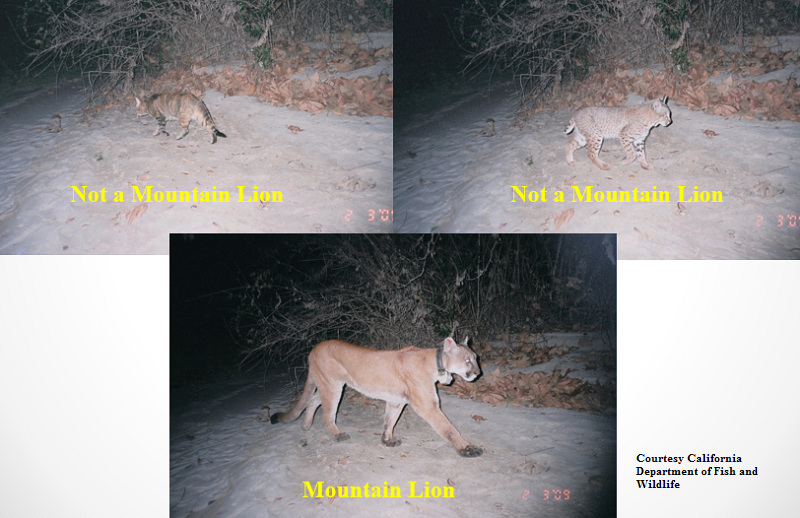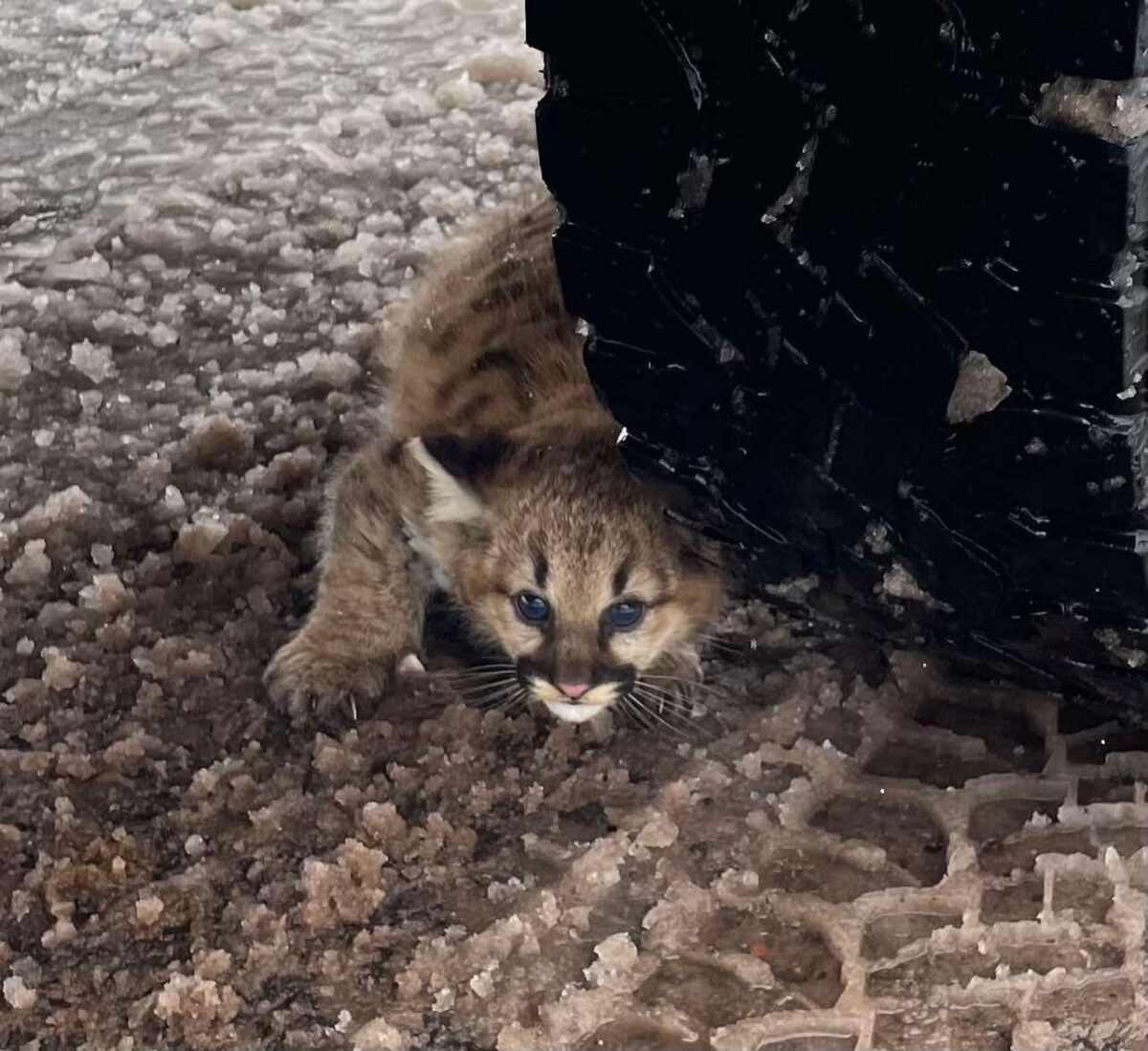So You Think You Saw a Mountain Lion?
Many people come back from hikes or drives certain they’ve seen a mountain lion. While lions are elusive and mainly avoid people, they do show up sunning on rocks, as an exciting and unexpected sight on a walk out in nature, or as a brief glimpse dashing across a road or highway.
But many folks mistake bobcats and even domestic cats for lions. In the adrenaline-filled moment when you think you’re seeing a lion, we can forget to look for the most distinctive details that will tell you whether the feline you’re seeing is a lion or not.
Here’s some ways to tell if you may be looking at a mountain lion.
Mountain lions are big. They can weigh anywhere from 75 pounds (a young female) to 200 pounds (a full-grown male.) When you think you’re seeing a lion, try to get a sense of how tall the animal is compared to the trees and vegetation behind the animal.
Mountain lions have a long, heavy tail. This is perhaps their most defining identifying characteristic. The tail of a mountain lion can be 1/3 its body length. Used for balance and rudder-like direction changes when chasing prey, it’s thick and muscular with a dark tip. Bobcats have a distinctive stub tail and even large domestic cats have smaller tails that don’t compare with the powerful back appendage of a lion!
Mountain lions are usually tawny in color with no stripes or markings. Their kittens however, are born with spots to help them blend in with the surrounding terrain. Kittens lose these spots as they grow. By around 2 months old, their spots start to fade and by one year old, their spots have faded significantly.

Safety First
If you think you’re seeing a mountain lion, first and foremost take careful steps to stay safe – appear large and loud, maintain eye contact, pick up small children and back away slowly, giving the cat an avenue for escape.
If you are seeing what you think is a mountain lion in a non-threatening situation, such as from a car or in the distance, walking or running away from you or appearing across a river or other natural barrier, don’t ever approach them but try and get a photograph so you can confirm your sighting later!
Seeing a mountain lion in the wild is a rare privilege and you’d be among the relatively few people who’ve actually seen these big cats in their native home.
—
The Bureau of Land Management initiated a mountain lion study on the Cosumnes River Preserve in collaboration with the California Department of Fish and Wildlife in 2014. The study is currently being carried forward by an all-volunteer crew of dedicated individuals with continued support and oversight from the Bureau of Land Management. The Sacramento Zoo has awarded a grant to the Mountain Lion Foundation which has allowed the Foundation to purchase and loan ten trail cameras to the Preserve to help carry out this study. The goal is to find and document a mountain lion on the Cosumnes River Preserve.



 Facebook
Facebook Twitter
Twitter Send Email
Send Email


